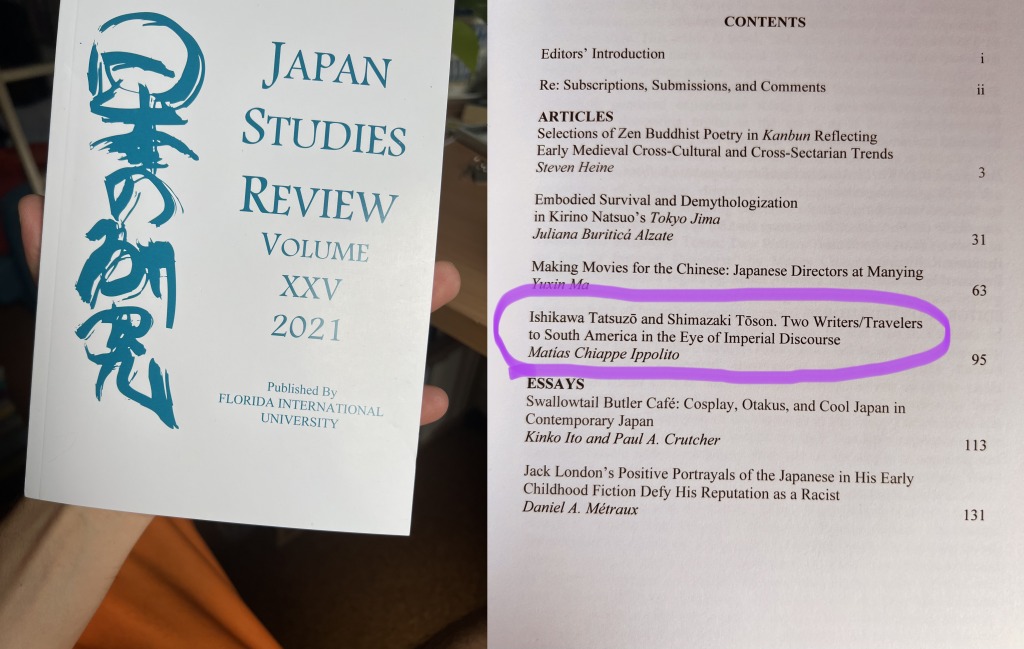
The aim of this article is to analyze and compare the works of Ishikawa Tatsuzō and Shimazaki Tōson about South America. Both Japanese writers visited the region during the Empire of Japan’s expansion throughout Asia and Central and South America via migration and settlers’ projects. Ishikawa Tatsuzō (1905–1985) traveled to Brazil as a correspondent in 1930, a journey that would result in his celebrated novel Sōbō (1935). The book criticized the ill-treatment that Japanese migrant delegations to Brazil suffered during the previous decades. As for Shimazaki Tōson, he traveled to Argentina with the Japanese government’s sponsorship in 1936 to participate in the International PEN Club Congress, an official voyage that sought to develop deeper ties with South American countries and mitigate the militarist image that Japan had developed in the previous years. The product of the trip was Shimazaki’s travel account, Junrei (Pilgrimage, 1936). In essence, the works of these two writers are inseparable in terms of colonial discourse as they both envisaged in South America a standpoint from where to write about colonialism and modernization.

Deja un comentario